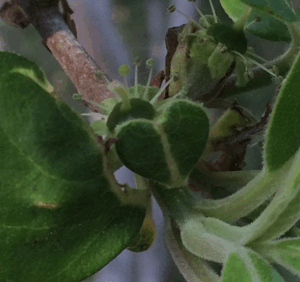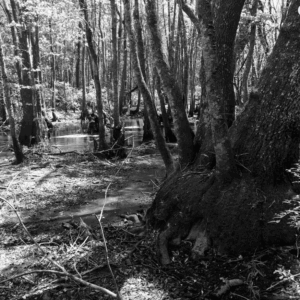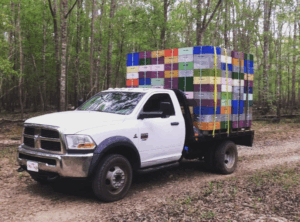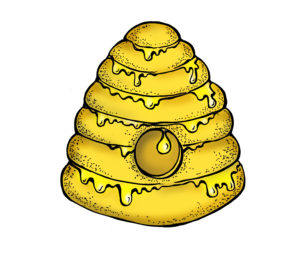   Every now and then I like to talk a bit about a varietal of honey people ask me questions about. Today we’re talking about Tupelo Honey. Just like Van Morrison sang, “She’s as sweet as Tupelo Honey”. Tupelo Honey comes from the Ogeechee Tupelo tree, which only grows in southern Georgia and Northern Florida. The blossoms don’t stick around for long, so beekeepers better have their bees in place and ready to go when those flowers start blooming. The Ogeechee Tupelo tree is a swamp loving tree that grows well in shallow flowing water. I call them the granddaddy trees of Georgia. They live a very long life and their size is impressive, flowering with little round green balls with buds the size of a thumb tack head circled all around it. When the Ogeechee is in bloom, it’s the only place to be as far as the honey bees are concerned. They’ll ignore other sources of nectar because it is really easy for them to gather a lot of nectar in a short amount of time. Work smarter, not harder. Right? True Ogeechee Tupelo honey gathered has a bit of a green tint to it. Compared to regular honey, clover for example, it has a lower glycemic index. This helps avoid the sugar rush you get, and to a diabetic like me, it’s the better choice of honey for my daily intake. The honey also has more fructose than glucose, so it does not crystalize as quickly as regular honey. This also gives it a distinctive sweetness which makes it great for sweetening tea or other things. It also has a slight cinnamon and buttery flavor on top of the floral notes. Now here’s the thing, though. There’s an imposter on the market, a “Two-pelo” if you will however it comes from the Black Tupelo tree. Itt’s a common variety and nothing particularly special, but it gets labeled and sold as Tupelo jut the same. Some beekeepers will tell you in very small print that the honey is from the Black Tupelo (common) but will charge as much as you’d pay for the real deal. In the future I may pick up a bucket and send samples along with my authentic, high-quality Tupelo so you can taste the difference. So true Ogeechee Tupelo, in a nutshell (or a honeycomb cell) only grows in a small region of the world, blooming for a short period of time, and some years the trees just don’t produce much nectar. A bit more expensive than common honey, to be sure, but worth every cent! |

